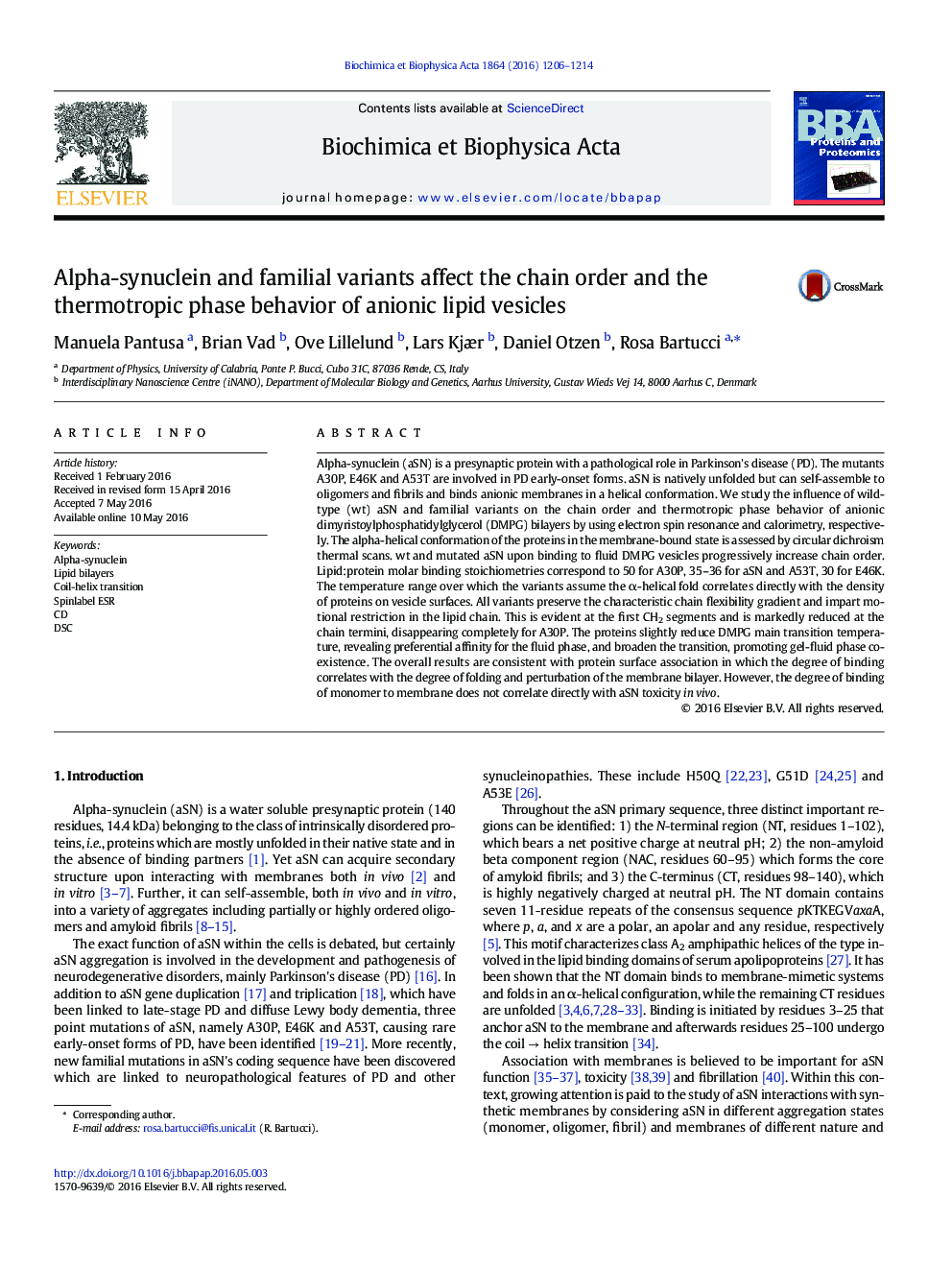| کد مقاله | کد نشریه | سال انتشار | مقاله انگلیسی | نسخه تمام متن |
|---|---|---|---|---|
| 1178058 | 962660 | 2016 | 9 صفحه PDF | دانلود رایگان |
• Alpha-synuclein and mutants A30P, E46K and A53T interact with DMPG vesicles.
• The proteins acquire α-helical conformation upon surface association on DMPG in the fluid phase.
• The temperature range of protein folding correlates directly with the number of proteins per lipid.
• The proteins preserve the chain flexibility profile and induce motional restriction in DMPG chain.
• The proteins reduce DMPG main transition temperature and promote gel-fluid phase coexistence.
Alpha-synuclein (aSN) is a presynaptic protein with a pathological role in Parkinson's disease (PD). The mutants A30P, E46K and A53T are involved in PD early-onset forms. aSN is natively unfolded but can self-assemble to oligomers and fibrils and binds anionic membranes in a helical conformation. We study the influence of wild-type (wt) aSN and familial variants on the chain order and thermotropic phase behavior of anionic dimyristoylphosphatidylglycerol (DMPG) bilayers by using electron spin resonance and calorimetry, respectively. The alpha-helical conformation of the proteins in the membrane-bound state is assessed by circular dichroism thermal scans. wt and mutated aSN upon binding to fluid DMPG vesicles progressively increase chain order. Lipid:protein molar binding stoichiometries correspond to 50 for A30P, 35–36 for aSN and A53T, 30 for E46K. The temperature range over which the variants assume the α-helical fold correlates directly with the density of proteins on vesicle surfaces. All variants preserve the characteristic chain flexibility gradient and impart motional restriction in the lipid chain. This is evident at the first CH2 segments and is markedly reduced at the chain termini, disappearing completely for A30P. The proteins slightly reduce DMPG main transition temperature, revealing preferential affinity for the fluid phase, and broaden the transition, promoting gel-fluid phase coexistence. The overall results are consistent with protein surface association in which the degree of binding correlates with the degree of folding and perturbation of the membrane bilayer. However, the degree of binding of monomer to membrane does not correlate directly with aSN toxicity in vivo.
Journal: Biochimica et Biophysica Acta (BBA) - Proteins and Proteomics - Volume 1864, Issue 9, September 2016, Pages 1206–1214
